
Installing OpenSSL on a Windows system lets developers and users leverage its powerful encryption capabilities for various purposes, including securing web servers, encrypting files, and more.
This guide will show you how to install OpenSSL on Windows and troubleshoot potential issues that may arise when using it.
Before Installation
Before installing OpenSSL on Windows, ensure that you have the following prerequisites:
- Administrative privileges on the Windows system to install software.
- Microsoft Visual C++ Redistributable for Visual Studio (latest version) installed on your system.
- A reliable internet connection to download the OpenSSL installer.
- Sufficient disk space for installation.
Step 1: Downloading OpenSSL
The first step is to download the OpenSSL installer package suitable for your Windows system architecture (32-bit or 64-bit). Follow these steps:
- Open your web browser and navigate to the OpenSSL packages for Windows systems.
- Choose the version of OpenSSL you want to download. We recommend downloading the latest stable version for optimal security and performance.
- Select the appropriate installer package (EXE or MSI) for your Windows system (32-bit or 64-bit), and click on it to start the download.
Step 2: Installing OpenSSL
Once you have downloaded the OpenSSL installer package, follow these steps to install it on your Windows system:
- Locate the downloaded installer package in your file system (usually in the Downloads folder).
- Double-click on the installer file to start the installation process.
- If prompted by the User Account Control (UAC), click “Yes” to allow the installer to change your system.
- The OpenSSL installation wizard will appear. Follow the on-screen instructions to proceed with the installation.
- Choose the installation directory where you want to install OpenSSL. The default directory is typically C:\Program Files\OpenSSL.
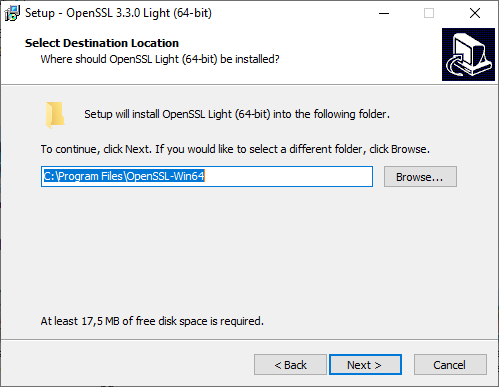
- Select the components you want to install. We recommend installing all components to ensure the full functionality of OpenSSL.
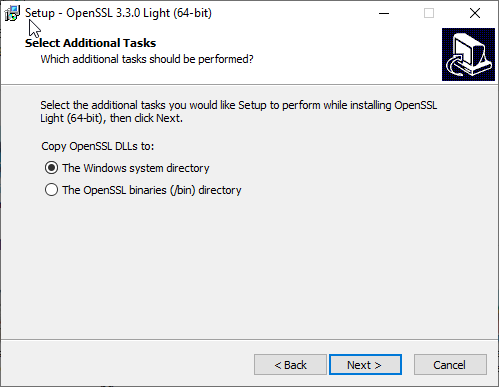
- Click “Next” to begin the installation process.
- Wait for the installer to copy the necessary files and complete the installation. This process may take a few seconds.
- Once the installation is complete, you will see a confirmation message. Click “Finish” to exit the installer.
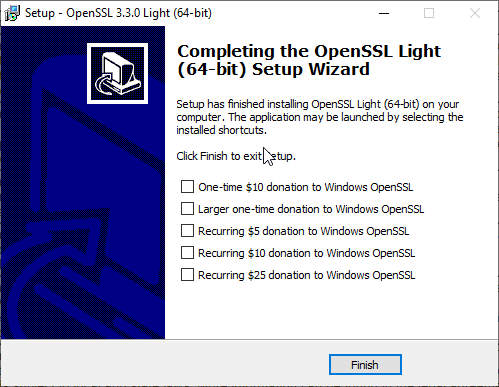
Step 3: Configuring Environment Variables
After installing OpenSSL, you need to configure the environment variables to make it accessible from the command line. Environment variables in Windows are dynamic values that define the operating system’s environment and behavior. Follow these steps:
- Right-click the “Start” button and select “System” from the context menu.
- In the System window, click “Advanced system settings” on the right-hand side.
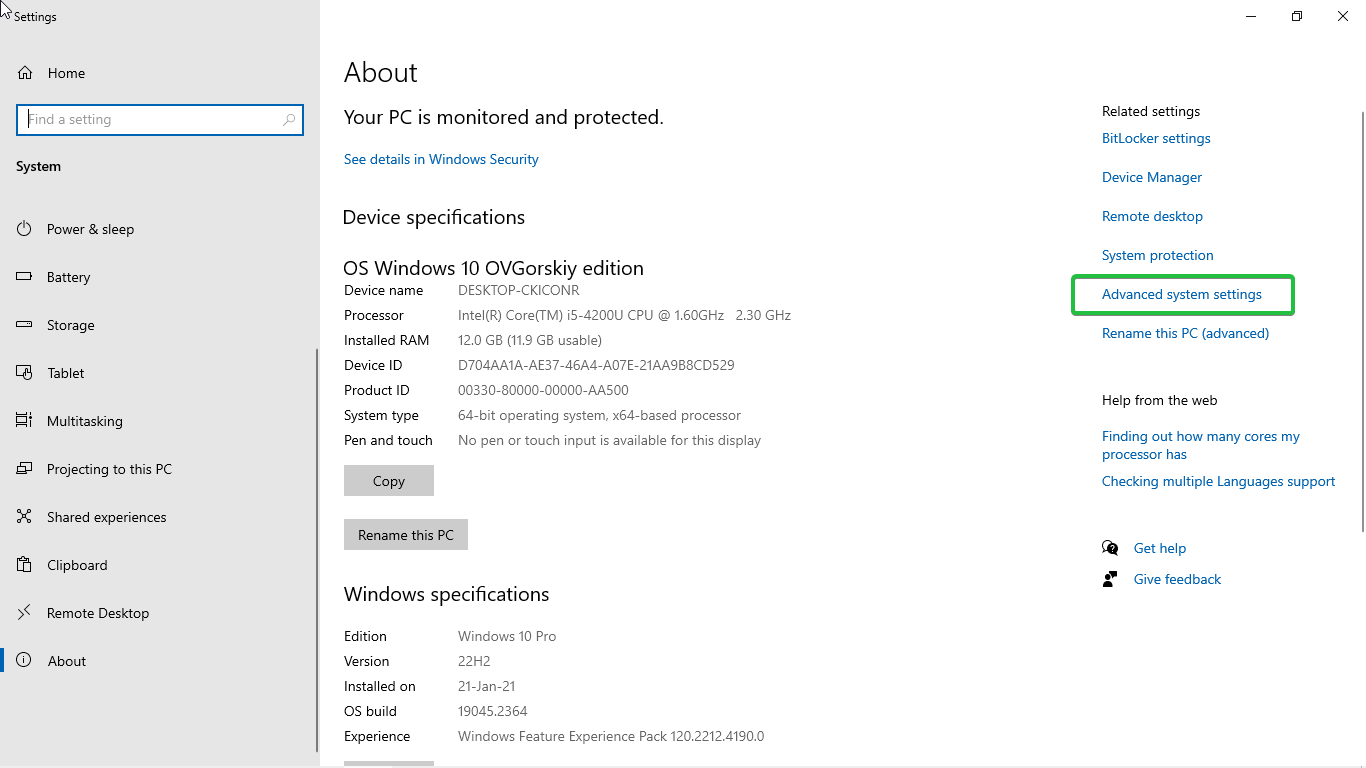
- In the System Properties window, click the “Environment Variables…” button.
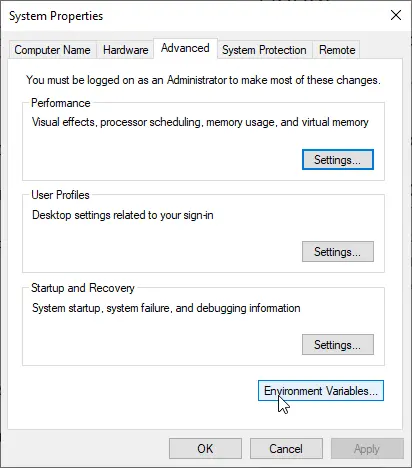
- In the Environment Variables window, under the “System variables” section, select the “Path” variable and click on “Edit…“
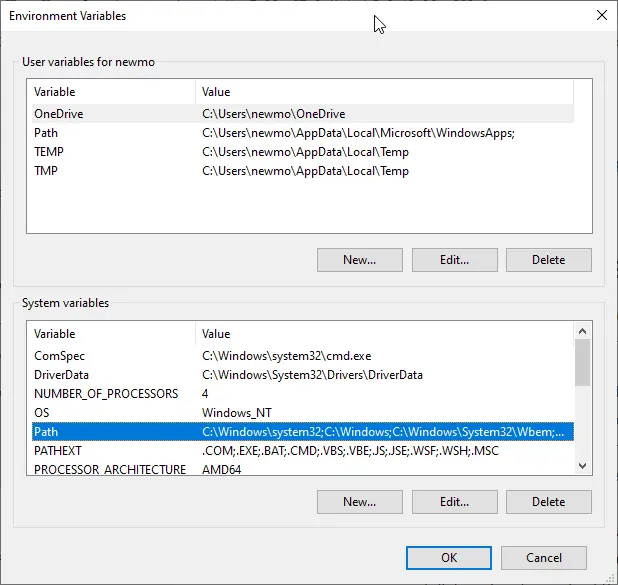
- In the Edit Environment Variable window, click “New” and add the path to the OpenSSL bin directory. The default path is C:\Program Files\OpenSSL\bin. If you chose a different installation directory, adjust the path accordingly.
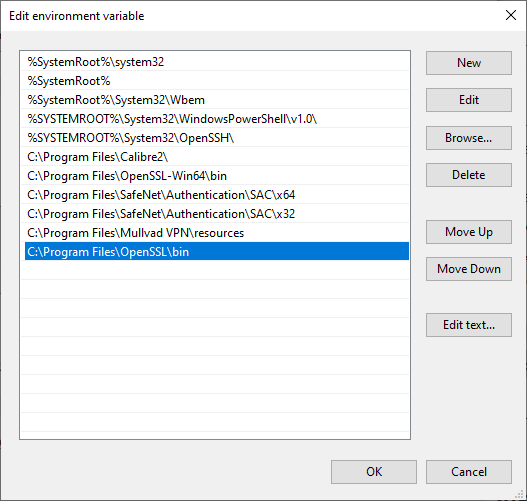
- Click “OK” to save the changes and close all the open windows.
Step 4: Verifying the Installation
To verify that you have successfully installed OpenSSL on your Windows system, follow these steps:
- Open the Command Prompt by typing “cmd” in the Windows search bar and pressing Enter.
- In the Command Prompt window, type the following command and press Enter:
openssl version - If OpenSSL is installed correctly, you will see the version number and other information about the OpenSSL installation.

Step 5: Testing OpenSSL
To test OpenSSL and ensure it’s functioning correctly, you can perform a simple encryption and decryption test. Follow these steps:
- Create a text file containing some sample text. For example, create a file named plaintext.txt and add some text to it.
- Press the Windows key on your keyboard to open the Start menu, type “cmd,” and press Enter. This will open the Command Prompt.
- Use the cd command to navigate to the directory containing the plaintext.txt file. If you know the full path to the directory, you can type it directly. For example:
cd C:\Path\To\Directory - To encrypt the text file using, type the following OpenSSL command and press Enter:
openssl enc -aes-256-cbc -salt -pbkdf2 -in plaintext.txt -out encrypted.txt - OpenSSL will prompt you to enter a passphrase. Enter a strong passphrase and remember it for decryption.
- Once the encryption process is complete, you will have a file named encrypted.txt containing the encrypted data.
- To decrypt the encrypted file and retrieve the original text, type the following command and press Enter:
openssl enc -d -aes-256-cbc -pbkdf2 -in encrypted.txt -out decrypted.txt - OpenSSL will prompt you to enter the passphrase you used for encryption. Enter the passphrase and press Enter.
- OpenSSL will decrypt the file and save the decrypted text to a file named decrypted.txt.
If you can successfully encrypt and decrypt a file using OpenSSL, it indicates that OpenSSL is installed and functioning correctly on your Windows system.

Common Challenges when Setting up OpenSSL on Windows
After installing OpenSSL on Windows, you might encounter some common issues or challenges. Here’s a list of potential problems and troubleshooting steps to resolve them:
- Path Configuration Challenges: Sometimes, the Command Prompt may not recognize OpenSSL binaries. Ensure the OpenSSL bin directory is properly added to the system’s PATH variable. Edit the PATH variable if it’s missing or incorrect.
- Access Permissions Errors: If you encounter “Access Denied” messages, ensure you’re running Command Prompt with administrative privileges. Right-click Command Prompt and select “Run as administrator”.
- Antivirus Interference: Some antivirus software might interfere with OpenSSL or flag it as a threat. Add OpenSSL’s installation directory to your antivirus exclusion list.
- Incorrect Installation Directory: If OpenSSL was installed in the wrong directory, consider reinstalling and selecting the correct directory during installation.
- Dependency Issues: Missing dependencies can cause errors. Install all required dependencies such as Visual C++ Redistributable packages or other libraries.
- Firewall Restrictions: Firewall settings may block OpenSSL from accessing the internet or necessary resources. Adjust firewall settings to allow OpenSSL access.
- Outdated Software: Using an outdated OpenSSL version may expose you to bugs or vulnerabilities. Always use the latest stable version to benefit from improvements and security patches.
- Permission Problems: Insufficient permissions on files or directories can cause OpenSSL commands to fail. Check and adjust permissions as needed.
By addressing these common issues, you can ensure a smooth installation and operation of OpenSSL on your Windows system.
Bottom Line
Learning how to install OpenSSL on Windows is a skill that will come in handy when generating and managing SSL certificates. By following these instructions, users of all technical levels can confidently install OpenSSL, ensuring robust encryption for safeguarding data and enabling secure communication.
Save 10% on SSL Certificates when ordering today!
Fast issuance, strong encryption, 99.99% browser trust, dedicated support, and 25-day money-back guarantee. Coupon code: SAVE10






















